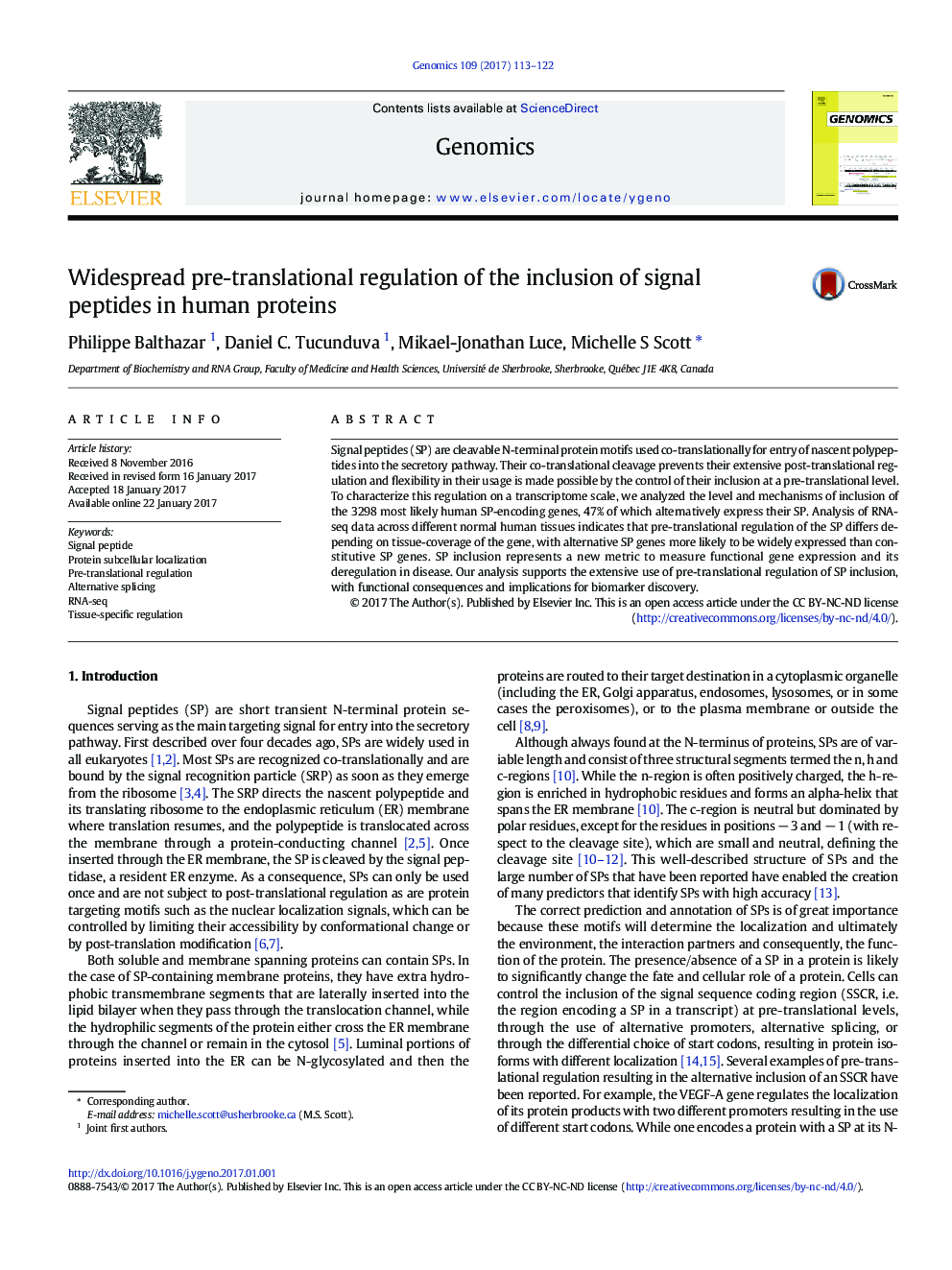| Article ID | Journal | Published Year | Pages | File Type |
|---|---|---|---|---|
| 5590108 | Genomics | 2017 | 10 Pages |
Abstract
Signal peptides (SP) are cleavable N-terminal protein motifs used co-translationally for entry of nascent polypeptides into the secretory pathway. Their co-translational cleavage prevents their extensive post-translational regulation and flexibility in their usage is made possible by the control of their inclusion at a pre-translational level. To characterize this regulation on a transcriptome scale, we analyzed the level and mechanisms of inclusion of the 3298 most likely human SP-encoding genes, 47% of which alternatively express their SP. Analysis of RNA-seq data across different normal human tissues indicates that pre-translational regulation of the SP differs depending on tissue-coverage of the gene, with alternative SP genes more likely to be widely expressed than constitutive SP genes. SP inclusion represents a new metric to measure functional gene expression and its deregulation in disease. Our analysis supports the extensive use of pre-translational regulation of SP inclusion, with functional consequences and implications for biomarker discovery.
Keywords
Related Topics
Life Sciences
Biochemistry, Genetics and Molecular Biology
Genetics
Authors
Philippe Balthazar, Daniel C. Tucunduva, Mikael-Jonathan Luce, Michelle S Scott,
